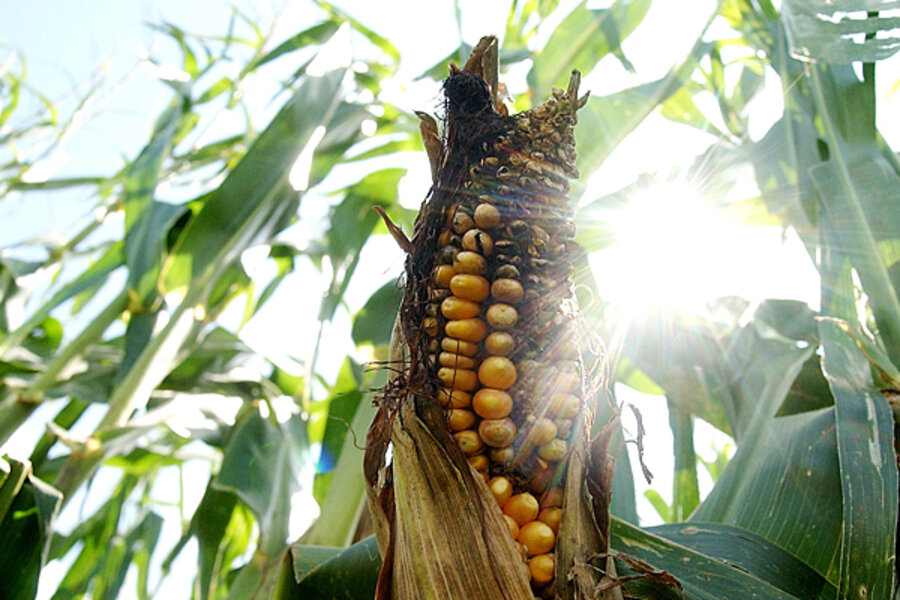Poor farmers must not be the losers in the fight against climate change
Loading...
Now that countries around the world have agreed on a global deal to tackle climate change, attention has shifted to how we’re going to do it. If we’re to meet the ambitious targets in the Paris climate agreement, we need to reduce our emissions and do it fast. Bioenergy and carbon capture storage – a plan to take carbon dioxide and trap it under the ground rather than releasing it into the atmosphere – have become a controversial part of the discussions on how we do this.
Last month, the U.S. Environmental Protection Agency (EPA) proposed the amount of biofuels to be used in the United States in 2016 and there has been much discussion on Capitol Hill of the Renewable Fuel Standard (the U.S. biofuel mandate) and its benefits in the fight against climate change. As the food versus fuel debate continues, a new study was published arguing that biofuels are actually good for food security. However, the study is seriously flawed.
Not only are the authors unable to make their case that biofuels support food security, but they also fail to discredit the evidence that biofuels contribute to hunger globally. By underestimating the competition for land and ignoring the impact that such large land deals are having on local farmers around the world, the authors fail to take into account important evidence which shows that U.S. biofuels policies are increasing hunger around the world.
Where we can agree is on the importance of investing in agriculture. But the authors overlook the importance of how the investment is made and who it benefits. They argue that demand for biofuels will result in increased investment in agriculture because of higher and more stable commodity prices, which will increase food security in the long run. But private sector investment driven by high commodity prices will not be focused on food security for local communities. Instead, it will focus on increasing production, likely by using expensive machinery, or only focus on a handful of bioenergy feedstocks. This will only continue to support an agricultural model that leaves millions hungry and millions more sick from consuming too much of the wrong food.
A false solution to our energy needs
Another claim is that biofuel production will add value and diversify production, leading to higher and more stable rural incomes, and therefore reduced hunger. Increasing incomes for local farmers is important, but biofuels aren’t going to do this. Producing biofuels efficiently means growing biofuel crops at scale, which means large plantations – so poor farmers are unlikely to benefit.
What ActionAid is seeing in the communities where it works across Latin America, sub-Saharan Africa, and Asia, is that demand for large amounts of biofuels is fueling land grabs. Local family farmers are being kicked off their land to make way for biofuels plantations. Some companies will then offer some of the displaced farmers a job, but these are often poorly paid and seasonal, meaning they can be laid off at any time. Added to this, the jobs are often not available to women, leaving them without the means to support their families.
The authors do mention the importance of land tenure and that biofuels should respect land rights. But biofuel plantations are typically large, industrial mono-cropped plantations. In developing countries, land rights are often poorly enforced and it is all too easy for biofuel companies to kick farmers off their land to make way for large biofuel plantations. From 2002 to 2012 alone, biofuels were responsible for land grabs totaling 17 million hectares – and that’s a conservative estimate! If local farmers don’t have land, they can’t grow food, so any policy that results in land grabs must be recognized as undermining the right to food and increasing hunger.
The most troubling argument that we often hear is that there is plenty of land available for biofuels without affecting other needs like food production. In this report, the calculations of how much land is available just don’t add up. The authors estimate that 1.7 billion hectares of land will be needed to feed the world in 2050, but this figure is just over all global cropland in use today! That figure includes not just what is being used to produce food, but also bioenergy, cotton and any other crops.
If we want to make more land available for non-food uses like bioenergy, we will have to cut down rainforests and clear shrub land, which is bad for the environment and contributes to climate change. Plus, our growing population also needs land for other uses such as housing. In fact, climate change is expected to actually shrink the amount of arable land available to us, as sea levels rise and other climate change impacts continue.
Talk of investment in agriculture often comes with an emphasis on flexibility and the farmer’s ability to respond to the market. But mandates, such as the Renewable Fuel Standard in the U.S., are inflexible by design, to force biofuel production and consumption even if it would otherwise not happen. Our biofuel mandates were supposed to drive the development of next-generation biofuels, which would not compete with food crops.
That simply hasn’t happened and no one is expecting them to be available for large-scale use in the next decade. Instead, we are continuing to rely on food-based and land-intensive biofuels that can be worse for the planet than the fossil fuels they’re replacing. We need real action to cut emissions, and cannot afford to double down on false solutions like food-based biofuels that are bad for people and bad for the planet.
This article originally appeared on Food Tank.





